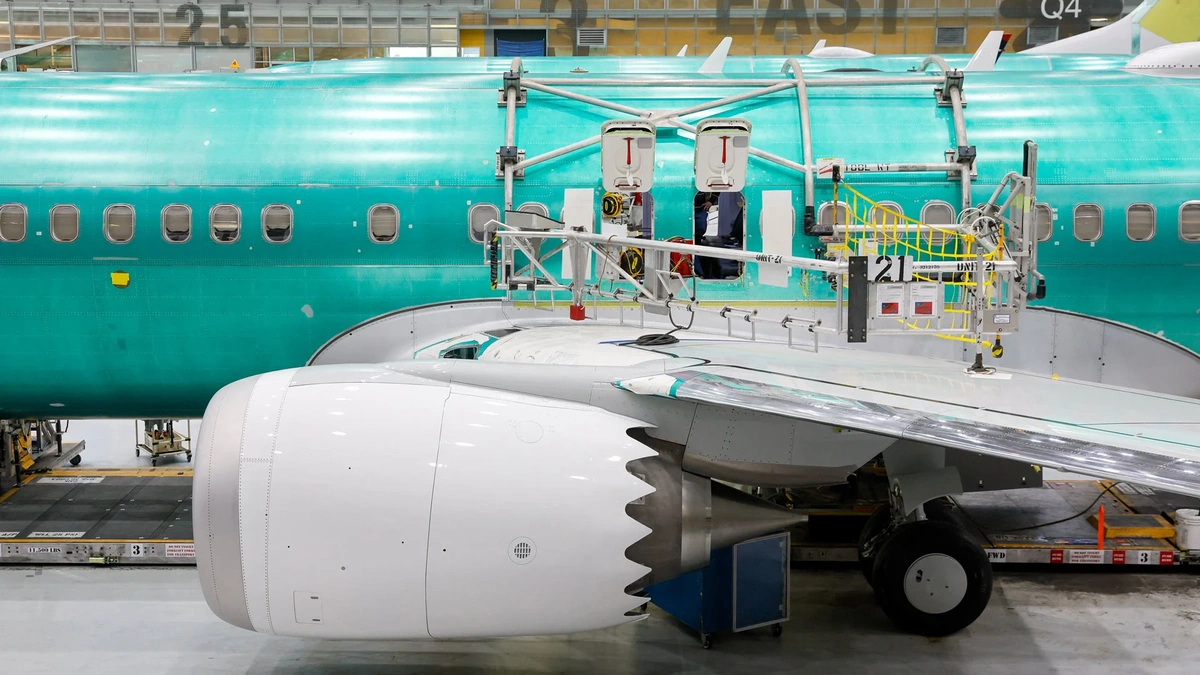So, Boeing’s been given the green light to ramp up 737 MAX production . Big deal, right? Actually, it kind of is. The FAA (Federal Aviation Administration) has finally signed off on Boeing’s plan to build 42 of these planes every month. After all the drama with the MAX, this is a significant step toward normalcy – or as normal as things get in the aviation world these days.
Why Does This Matter? The Analyst’s Take

Here’s the thing: this isn’t just about Boeing making more planes. It’s about confidence. The 737 MAX had a rough go, to say the least. Two fatal crashes grounded the entire fleet globally. Boeing had to redesign systems, retrain pilots – the works. This FAA approval is a sign that the regulators are satisfied Boeing has addressed the safety concerns. This approval signals a resurgence for Boeing and offers a peek into the aviation industry’s confidence in their safety improvements, impacting airlines and travellers globally.
And it’s not only about safety. Think about the economics. Boeing is a massive player in the global supply chain. More production means more jobs, more demand for parts, and more activity across the entire aerospace ecosystem. For India, which is aiming to become a major aviation hub, a healthy Boeing is good news, potentially leading to more partnerships and opportunities. Let’s be honest: this whole situation impacts everything from pilot training programs in Delhi to aircraft maintenance facilities in Bengaluru.
Let me rephrase that for clarity: this decision impacts the entire aviation ecosystem.
How Will This Affect Air Travel? The Practical Guide
Okay, so Boeing is making more planes. How does that translate to your next vacation or business trip? Initially, not much. These planes are already spoken for – airlines have backlogs to fill and routes to expand. But, over time, increased production can lead to a few things:
- More Capacity: More planes mean airlines can add routes or increase the frequency of existing ones. This could lead to more competitive pricing.
- Newer Fleets: Airlines are retiring older, less efficient aircraft and replacing them with newer models like the 737 MAX. This translates to a slightly better flying experience and potentially lower fuel costs, which might trickle down to ticket prices.
- Increased Competition: A larger supply of aircraft gives airlines more leverage when negotiating with manufacturers, potentially leading to lower purchase costs and, eventually, lower fares.
A common mistake I see people make is thinking this will instantly solve all the problems with air travel. It won’t. But it’s a step in the right direction. The aviation sector is experiencing supply chain challenges globally. Boeing’s increased production offers to alleviate some supply constraints. It’s a gradual process. But and it’s worth noting the FAA approval marks a milestone.
The Ripple Effect | Beyond Boeing
What fascinates me is the broader implications of this decision. It’s not just about Boeing; it’s about the entire aerospace industry. Airbus, Boeing’s main competitor, is also ramping up production. This increased activity puts pressure on suppliers, creates more jobs, and fuels innovation. According to FAA guidelines , safety measures are paramount. For India, this could mean more opportunities for its burgeoning aerospace sector. Companies that supply parts, provide engineering services, or offer maintenance support could see increased demand.
I initially thought this was straightforward, but then I realized the interconnectedness of it all. The rise in 737 MAX production is a vote of confidence in global aviation, and it has the potential to create opportunities far beyond Boeing’s factory floor.
Addressing Past Concerns | Safety First
Let’s be honest – there’s still a lot of skepticism surrounding the 737 MAX. The crashes are etched in our memory. Boeing knows this, and they’ve gone to great lengths to demonstrate that they’ve fixed the problems. They’ve redesigned the MCAS (Maneuvering Characteristics Augmentation System), the software implicated in the crashes, and implemented new pilot training programs. Aviation safety is the most important aspect.
The one thing you absolutely must remember is that the FAA wouldn’t have approved this increase in production if they weren’t convinced the plane was safe. They’ve been under intense scrutiny, and they’re not going to take any chances. While sources suggest a specific timeline for fleet upgrades, the official confirmation is still pending. It’s best to keep checking the official portal. It is very important to consider airline industry standards to ensure smooth operations.
India’s Opportunity | A Growing Aviation Market
India’s aviation market is booming. More people are flying, and airlines are expanding their fleets. This increased demand creates opportunities for Boeing and Airbus, as well as for domestic manufacturers and suppliers. The country’s growing middle class and increasing disposable incomes are fueling this growth, making it one of the most attractive aviation markets in the world. According to industry experts, air travel in India will increase significantly in the next few years.
The increased Boeing production rate will impact aircraft availability for Indian airlines to increase flight availability. This is good news for Indian travelers seeking more convenient and affordable options. Also, it can create opportunities for jobs for skilled workers such as Aircraft maintenance and pilots.
FAQ Section
Frequently Asked Questions
What exactly did the FAA approve?
The FAA approved Boeing’s plan to increase production of the 737 MAX to 42 planes per month.
Is the 737 MAX safe to fly?
The FAA has deemed the redesigned 737 MAX safe after extensive reviews and modifications. Airlines continue to implement updated training procedures.
How will this affect my next flight?
Initially, not much. Over time, increased production could lead to more routes, newer planes, and potentially lower fares.
What does this mean for India’s aviation sector?
It could create more opportunities for Indian suppliers and manufacturers, as well as airlines looking to expand their fleets.
Boeing’s increased production rate impacts the global aircraft market including India’s airline sector. It will be interesting to witness how Indian aviation adopts these new trends.




